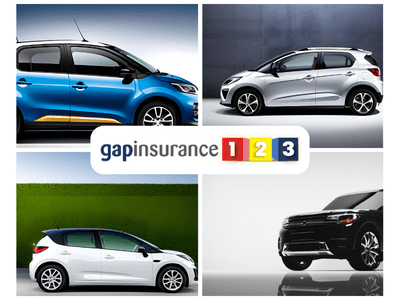Call Monday-Friday 9am - 6pm Closed Saturday & Sunday
Please select some policies.



Need Help? Calling from a mobile please call 0151 647 7556
0800 195 4926 / 0151 647 7556Do you have a question? or need help?
Call Monday-Friday 9am - 6pm Closed Saturday & Sunday,
GAP Insurance can be confusing for many people. However, it is easier to understand with a few facts and examples.
Here we will provide you with the basics for each type of GAP Insurance available for your car by running through examples of how a claim may run for each.
First of all, a few questions by way of an introduction.
Why Do You Need GAP Insurance for ?
What are the different types of GAP Insurance?
Combined Return to Invoice GAP Insurance (RTI)

GAP Insurance is a financial protection consumers take out when buying a car. It can be used to bridge a financial shortfall between the car insurance settlement if the vehicle is in an accident, fire, accident or theft, and, depending on why type of GAP Insurance you have:
Many GAP Insurance policies may be available to you hence why there are several potential outcomes in the event of a claim.
One word. Depreciation.
Cars will generally lose value over a period of time. This is simply a fact of life with car ownership.
The issues start if your car is involved in an accident, fire, flood or subject to theft.
Your main vehicle cover may be described as a 'fully comprehensive car insurance policy'. However, this will typically only cover you for the current market value of your car at any given time.
This means if the car is in an accident, fire, flood or is stolen, your motor insurer can choose to replace or repair your vehicle. They also have the option to pay you a cash settlement in compensation for the vehicle's value at that time. This is your market value settlement, where the motor insurer says the car is not economical to repair.
With a standard comprehensive write-off settlement, the market value means the amount it would cost you to replace your vehicle with the same age, mileage and specification as yours was when it was written off or stolen.
So if you had a 2020 Ford Focus 1.0 Ecoboost Titanium 5 door with 15,000 miles on the clock at the point of loss, it is the cost of another 2020 Focus of the exact specification, condition and mileage that the motor insurer must compensate you for.
To clarify further, there are several ways you can buy a car. These include auctions, eBay, privately or from a VAT registered, bona fida motor dealer. The car insurance payout should give you enough to buy the equivalent car from a motor dealer, where you can enjoy all the protections of a retail sale.
However, the market value is the market value. It is not:
There may be a shortfall between the settlement provided by the motor insurance cover and any of these elements above.
This is where GAP Insurance pays the difference between the motor insurer's settlement and, depending on which type you have, can get you back to:
Here we will briefly explain the most popular types of gap insurance coverage and how each can work in the event of a claim.
Each share one principle. All forms of Guaranteed Asset Protection can top up the settlement from your car insurance provider in case of a total loss.
Also known as:
This is the most common type of GAP Insurance and is widely available at motor dealers and online GAP Insurance specialists.
If your car is written off or stolen, then Return to Invoice GAP can cover the difference between your motor insurance settlement and the original price you first paid for your vehicle.
Let's illustrate this using a timeline and some figures.
If the Return to Invoice GAP is 'Combined', it will also feature protection in the form of Finance GAP Insurance. This means if you have a finance agreement like a hire purchase or personal contract purchase, and the finance settlement was higher than the invoice price paid, then the GAP can cover this extra shortfall also.
So, for example, if you paid £23,000 for the car and the finance settlement was £24,000, then a Combined Return to Invoice GAP can cover the extra £1000 required to pay off the finance also.

When you get a GAP Insurance quote for a new car in particular, you will often find online GAP Insurance providers will offer you a choice between Return to Invoice GAP and Vehicle Replacement GAP.
It can be challenging to differentiate between RTI and VRI GAP products. However, the difference is quite simple when it is made clear.
Vehicle Replacement GAP covers the difference between the motor insurance settlement at the point of loss and the cost of replacing the car with the equivalent replacement vehicle to the one you started with.
That could be:
The basis of Vehicle Replacement cover is that you can return to the same standard of the vehicle you started with, even if that price has increased.
The main difference, therefore, between a Return to Invoice GAP Insurance policy and a Vehicle Replacement GAP is that VRI will include any inflationary aspects of replacing the vehicle.
As with Return to Invoice GAP, VRI GAP can come in a 'combined' form. This may include finance gap insurance cover or both finance gap and Return to Invoice GAP. The advantage of being combined with RTI GAP comes where the cost of the replacement vehicle falls below the price you first paid. If combined, you will get the minimum of an RTI settlement if the replacement cost falls.
Also known as
A lease differs from buying a car outright or through HP, PCP or car loan/bank loan agreements. This is simply because all the other situations allow you to buy the vehicle. A lease on contract hire vehicles is a fixed-term rental arrangement where the leasing company remains the car owner, and you cannot buy it within the lease agreement you sign.
Your liability with a lease car is to pay off your lease. This settlement can include outstanding rental payments that may be owed for the remainder of the lease.
Contract Hire GAP Insurance aims to clear any liability on your lease if the car is written off or stolen.
Also known as
Agreed Value GAP Insurance is available for a different set of circumstances than the other types of GAP Insurance named above. With Agreed Value, the value protected is based on the value of the vehicle as defined by Glass' Guide (depending on the GAP Insurance provider), not the invoice price for the purchase.
Therefore Agreed Value GAP can be used for private car buys, auction buys or where your current GAP Insurance may have run out and you are looking to protect yourself for a further period.

The GAP products detailed above are the most popular types. However, you could get some more specialist types from online GAP Insurance providers.
These include:
Negative equity GAP insurance - designed to cover negative equity carried over from a previous finance agreement.
Top Up GAP Insurance - an annual policy that can top up a motor insurance settlement by a further 25%, capped at a maximum claim of £10,000.
The argument for GAP Insurance can be different between new and used cars. For example, VRI GAP Insurance can be less advantageous for used cars than for new cars. Indeed some GAP Insurance providers do not offer VRI GAP Insurance on used vehicles.
Return to Invoice tends to be the GAP Insurance policy of choice for used cars more often than not.
As lease cars tend to be brand new, then Contract Hire GAP is only for new vehicles.
Generally, if you are looking to buy GAP Insurance, then the cheaper GAP Insurance premiums tend to be found online rather than at the car dealership.
If you compare GAP Insurance products online, you will generally find a better selection of products also. GAP Insurance costs can be more than 50% cheaper online.
No. GAP Insurance is specific to when the vehicle is written off or stolen.
There are other products you can buy to cover malicious or accidental damage. These include
No. You are free to purchase GAP Insurance from many different providers. These include the finance company, independent online providers or price comparison websites.
No, GAPInsurance123 branded products are only available from the GAPInsurance123 website.
The need for GAP Insurance depends on your point of view and what your appetite for risk is. GAP Insurance is not compulsory. Therefore, you need to weigh up the balance of risk against what your concerns may be.
Many customers describe GAP Insurance as 'peace of mind' protection. It will be too many. It will also provide relief for those who have to use it.
The answer depends on how you are buying your vehicle.
If you are buying a brand-new car which has been discounted heavily, then Vehicle Replacement policies can be a great option. This is because the cost of the same standard new vehicle in the future could be far more expensive than what you paid this time because of your discount.
A Return to Invoice policy can be the best option if you buy a used car. This is because the replacement cost may not be significantly higher. The extra cost of a Vehicle Replacement policy may not be the best value.
Published 17/6/23, written by Mark Griffiths